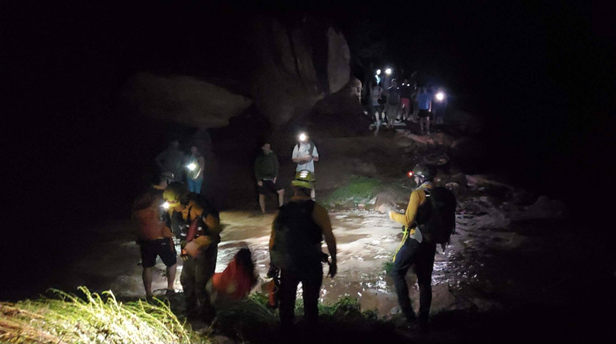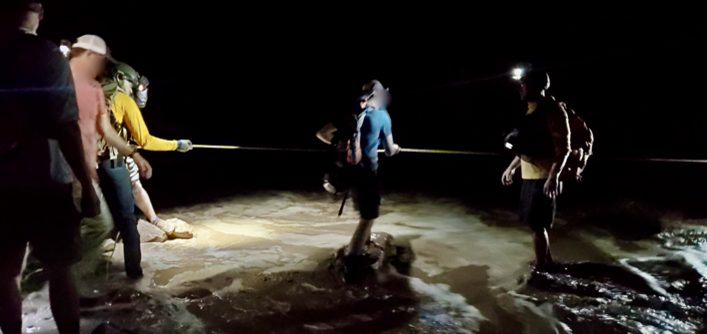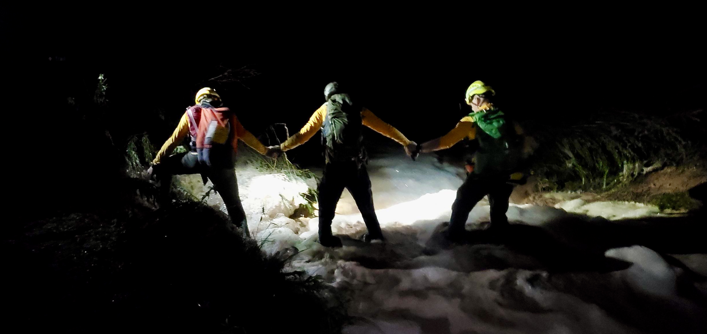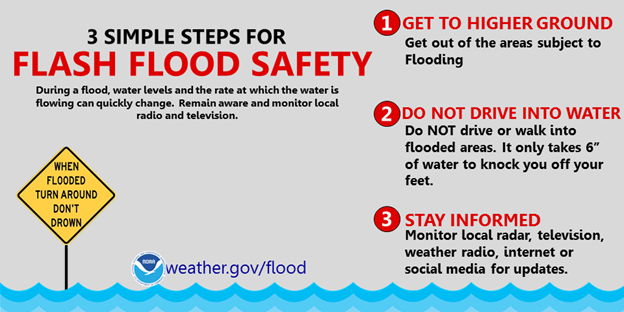News last week of a Texas couple gone missing and 20 people rescued after desert flash floods near Moab, Utah, are sharp reminders of the sudden dangers to outdoor enthusiasts exploring beautiful, wild places. Moab, located in the Colorado Plateau, averages 10 inches of precipitation annually. The region is dotted with national parks and hip towns. Its picturesque landscapes of steep, red rock cliffs and towers contrast with narrow slot canyons and dry "washes" or gullies and streambeds. It's popular with hikers, climbers, mountain bikers, kayakers, and base jumpers.
While normally arid, July through September can bring desert monsoons with life-threatening deluges combined with golf-ball sized hail, tropical storm-force winds, and lightning. Fast-falling water quickly funnels into low lying areas to form instant rivers of raging mud and debris. The National Weather Service states flash flooding is possible with rainfall rates of two inches per hour. A storm that recently hit Moab dumped an inch of rain in 15 minutes. For the unaware and unprepared, the adventure of a lifetime can quickly turn deadly. Flash floods can move hundreds of thousands of gallons of water, debris and even boulders. Massive "strainers" (river obstacles comprised of flood debris tangled with up to hundreds of fallen trees) are known in this area to weigh a few tons.
At the time of this writing, the search for Ray and Maranda Ankofsi continues, racking up thousands of search and rescue hours by air, four wheelers, hikers and dogs. The couple was last seen exploring on their all-terrain utility vehicle (UTV) in the Steel Bender Trail area on June 21, 2024 before severe weather brought on flash flooding. The Ankofsi’s UTV was later found with considerable damage. According to Grand County Sheriff's Office Deputy Mike Palmer, "It looks like probably once the flood hit the UTV, we think it traveled between three-quarters and a mile, pushed it into the basin and out the waterfall. Their tools and belongings are scattered over a three-mile area in this canyon."
Five miles north of Moab, the same night the Ankofsis went missing, emergency services received word of 3 hikers trapped by rising flood waters in Grandstaff Canyon. The six-hour rescue effort in the dark resulted in 20 people saved, thanks in part to a thermal imaging-equipped drone that flew up the canyon from the parking area, where SAR incident command was staged. The drone was launched to investigate distant lights seen when rescuers reached the 3 people who initially called for help. Flashlights carried by some of those 17 well-prepared hikers were key to signaling their location, resulting in their timely rescue.



Rescue of 20 hikers after flash flood near Moab, Utah. Photos from Grand County Sheriff's Search and Rescue Facebook post on 24 June 2024.
Follow these tips from the National Park Service if you are visiting the area during monsoon season:
●Know the weather forecast for your area AND areas upstream.
●Finish hiking in the AM and be out of canyons or away from washes before the afternoon.
●Do not camp or park your vehicle along/near streams and washes.
If you are hiking in canyons or by water:
●Pay attention to water conditions. Leave the river area immediately if the water becomes muddy or begins rising.
●Stay out of flooded areas, as the water may still be rising and the current is swift.
●Flash flooding can happen at any low water crossing or dip – even on roads. Never drive into a flooded roadway – find an alternate route or be patient and wait for the flooding to stop.

If you are caught in fast-moving floodwaters, follow these tips:
●Grab a stick to poke ahead for hazards like rocks, debris, and holes. If you can move out of moving water, you are more likely to survive.
●Try to grab and hold onto something sturdy to keep going downstream.
●Go over not under objects.
●It’s better to break an ankle than your skull, so point your feet downstream.
In the US, deaths from drownings are on the rise. Proven strategies to prevent drowning include teaching people how to swim and perform rescue breathing/CPR, wearing life jackets, and placing fences with childproof latches around pools.
If you encounter a drowning victim from floods, follow best practices as set out in the WMS Clinical Practice Guidelines for the Treatment and Prevention of Drowning (2024 Update).
●To rescue a drowning person: Those without formal water rescue training should attempt rescues from a safe location by reaching for, throwing a rope or floating object to, or rowing to the drowning patient.
●Vehicles caught in floods: We recommend escaping from a submerging vehicle immediately after it enters the water, during the initial floating phase. If the vehicle remains floating, we recommend people climb out and remain on top of the vehicle. If it is sinking, they should move away from the vehicle and toward safety after exiting.
●Initial resuscitation: Focus on reversing cerebral hypoxia first and foremost. Supplying oxygen to the brain is critical to successful resuscitation of the drowning patient. We recommend establishing an airway and providing oxygen with PEEP as priorities in initial resuscitation.
●Flash flood victims are likely to experience significant blunt force trauma. After initial stabilization, treat as for any multisystem trauma patient.